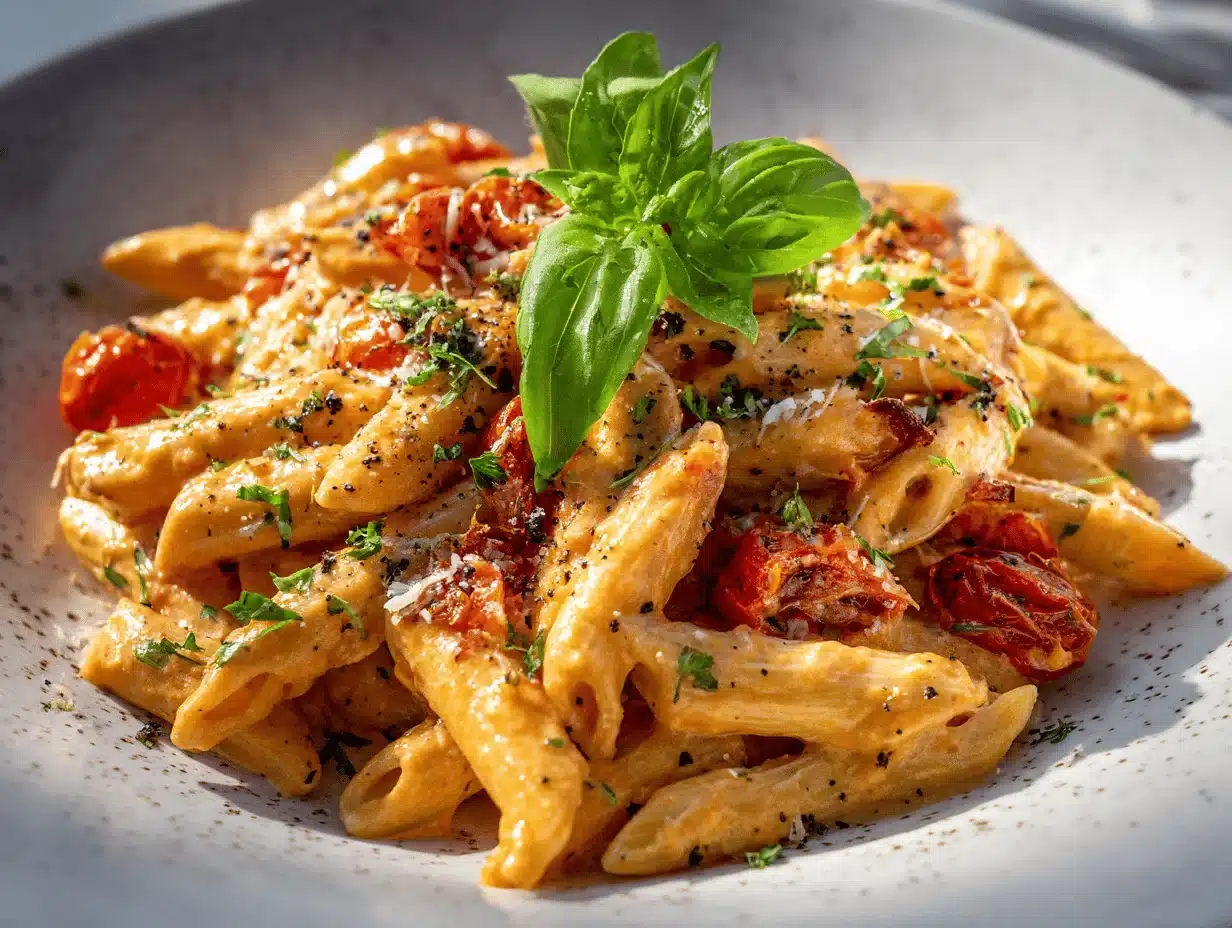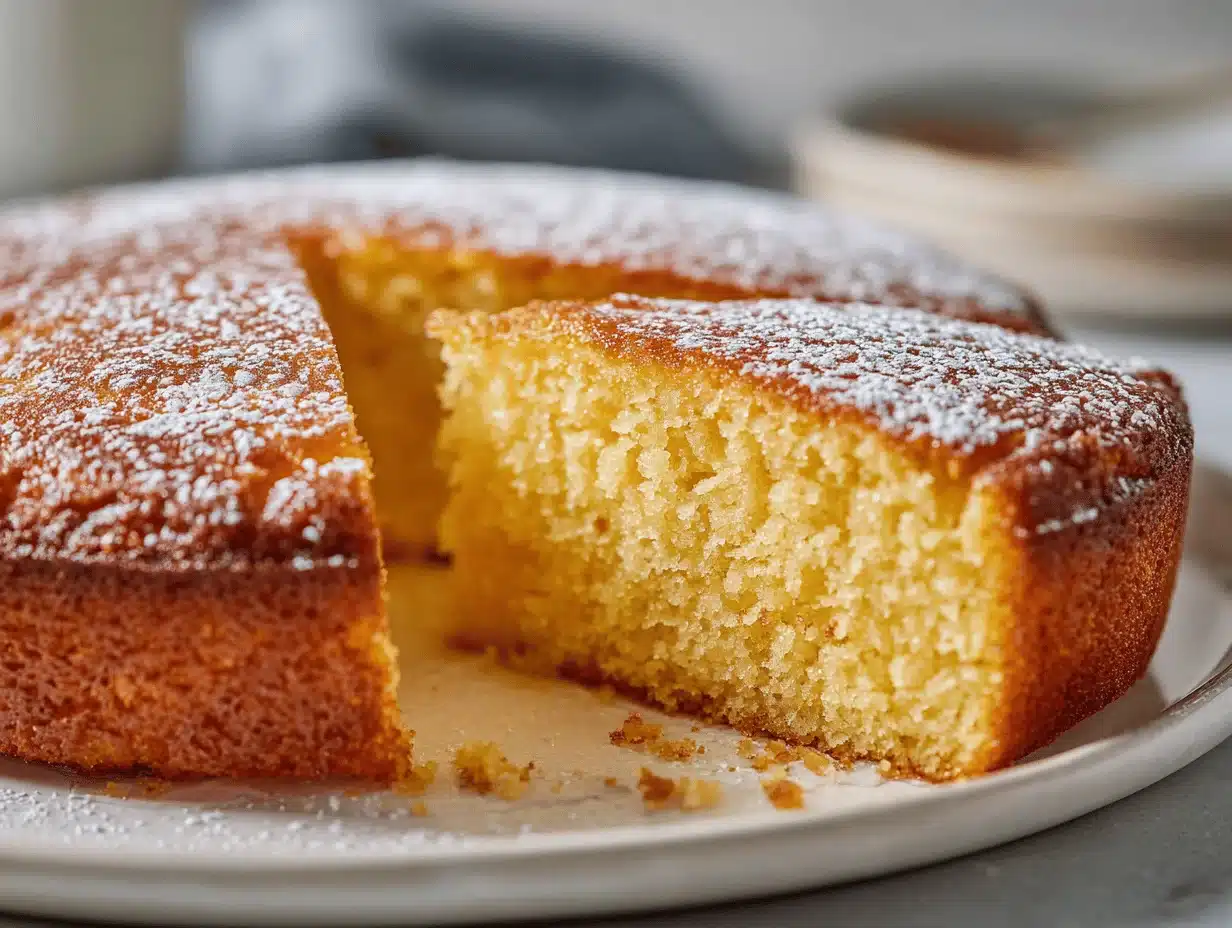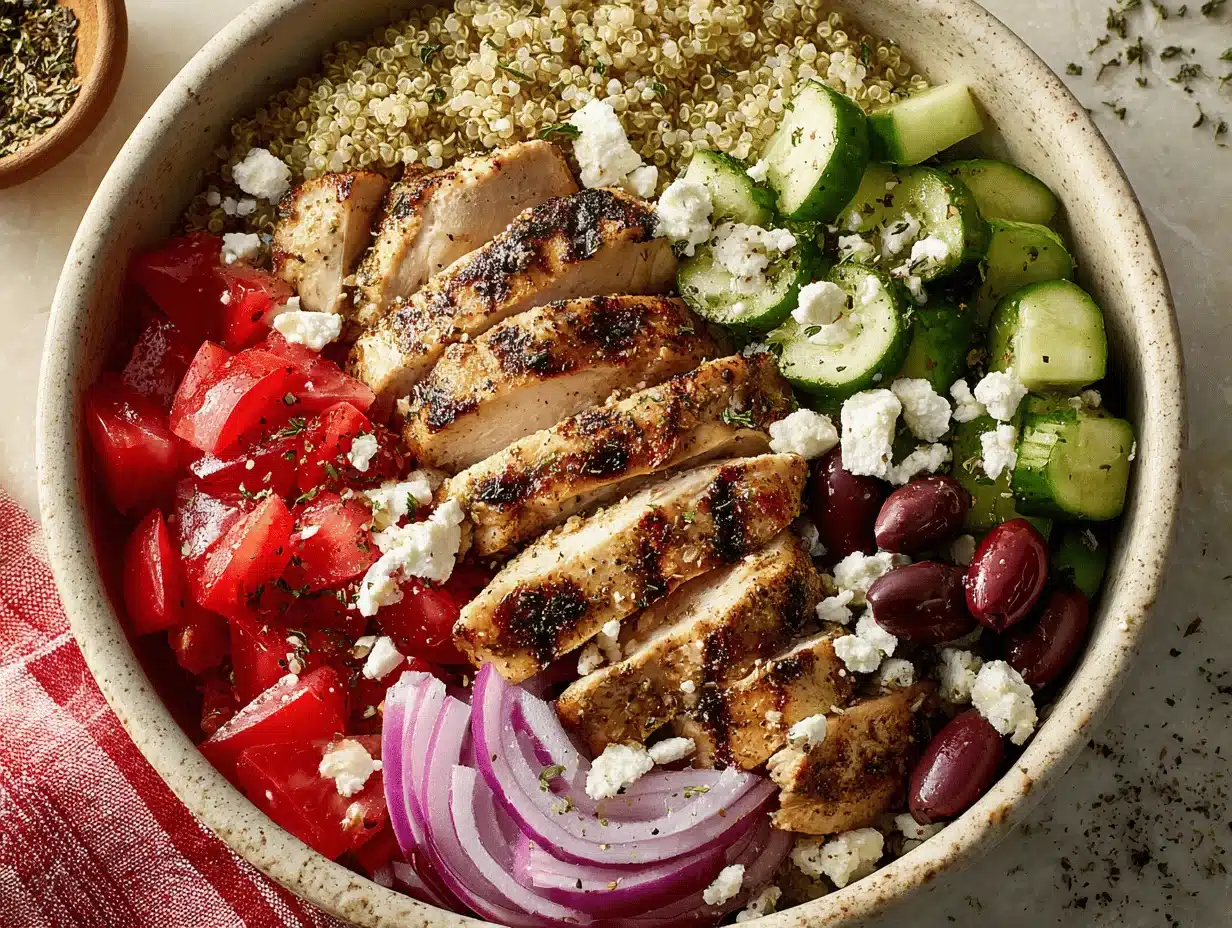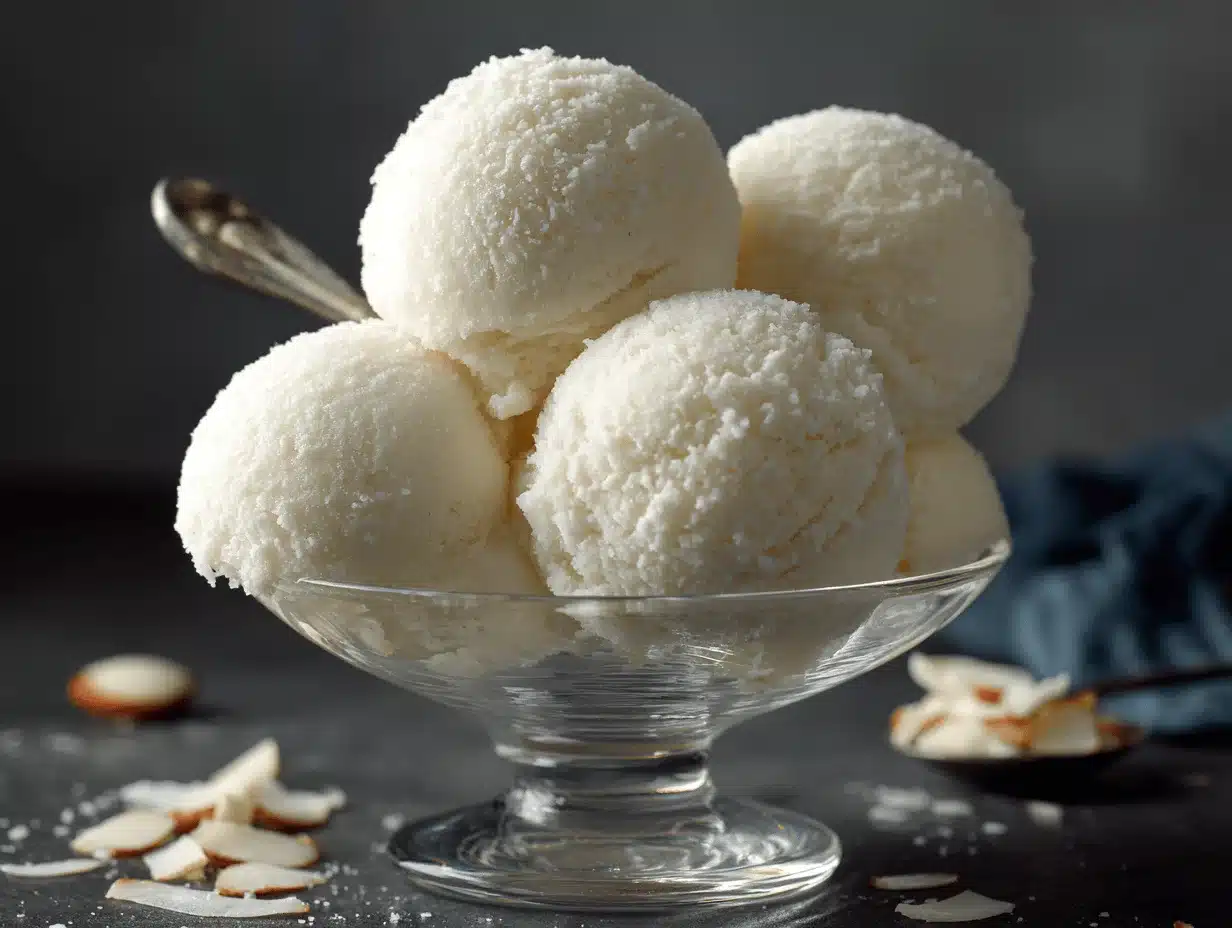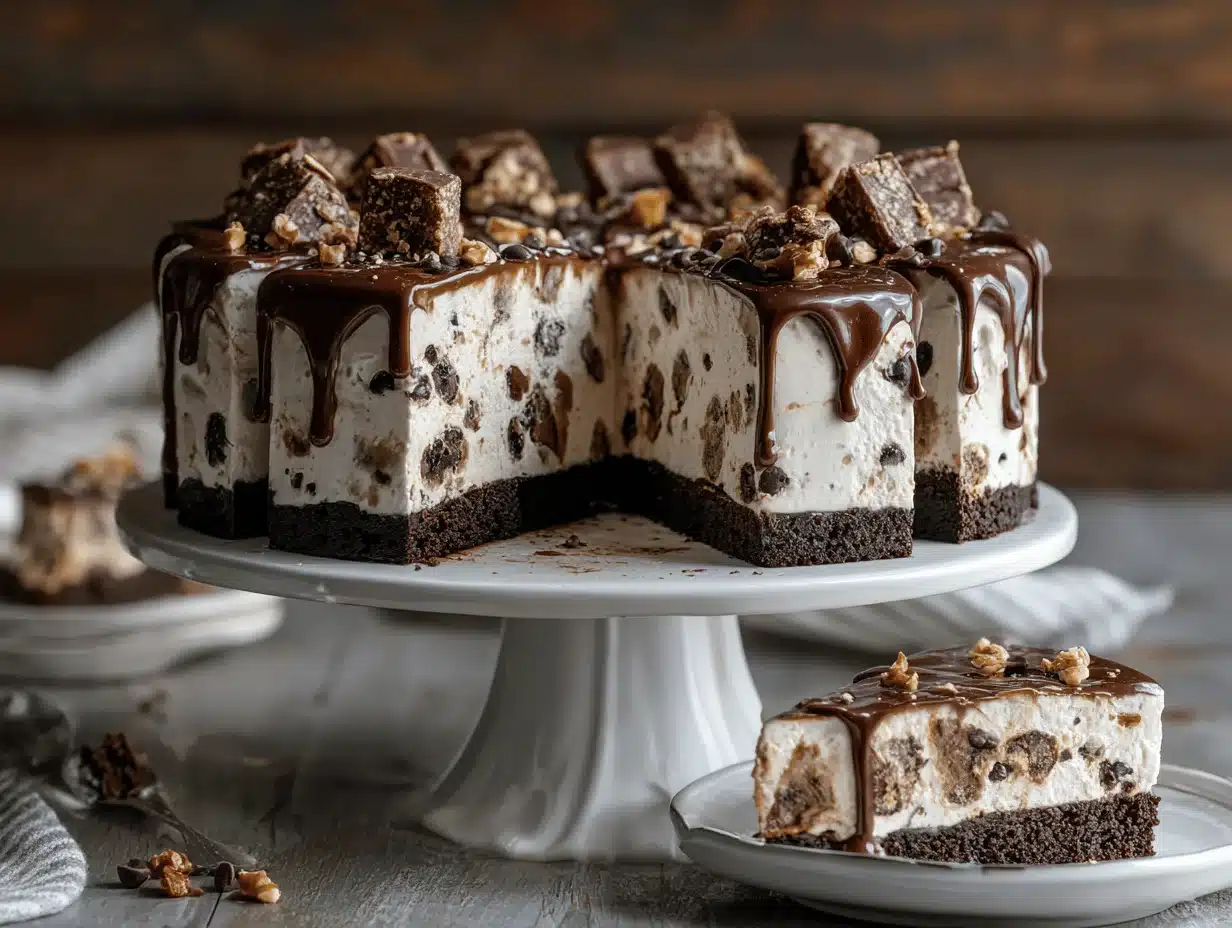Croissant French Toast is a next-level breakfast indulgence that combines the buttery, flaky layers of croissants with the rich, custard-soaked goodness of French toast. Whether preparing it for a cozy weekend brunch or looking for a fun way to use leftover croissants, this dish is guaranteed to impress. This guide will teach you everything you need—from ingredient selection and preparation tips to serving ideas and creative topping combinations. Let’s dive into the world of croissant French toast and elevate your breakfast game!
Table of Contents
Understanding Croissant French Toast
Croissant French Toast marries two beloved breakfast staples into one mouthwatering dish. Unlike traditional French toast made with bread slices, this version uses croissants, which adds a rich, buttery texture that elevates the entire experience.
What Makes Croissant French Toast Special?
- The flaky, buttery layers soak up the custard while retaining its structure, resulting in a crispy exterior and soft interior.
- The croissants’ unique crescent shape adds visual flair to your breakfast spread.
Learn how to perfect your croissants with this guide to making perfect chocolate croissants at home.
A Brief History of French Toast and Croissants
- French Toast Origins: Despite its name, French toast didn’t originate in France. The earliest records date back to Roman times, with the Pan Dulcis dish. However, it became associated with France due to the popularity of Pain Perdu (“lost bread”), a method for repurposing stale bread.
- The Croissant’s Story: The Croissant’s history is rooted in Austria, not France. It evolved from a pastry called the kipper, but it became iconic in France, earning its place in French bakeries and breakfast tables worldwide.
Why You’ll Love This Recipe
- Perfect for using leftover croissants that have gone slightly stale.
- It can be sweetened or turned savory with different custard flavors and toppings.
- If you’re looking for ways to explore other pastry-based dishes, check out these easy puff pastry recipes.

Ingredients Needed for Croissant French Toast
Creating the perfect croissant French toast starts with selecting the right ingredients. Here’s a breakdown of your needs and how each ingredient contributes to the dish’s rich, custardy goodness.
Essential Ingredients:
- Croissants (4 large or 6 medium)
- Day-old croissants work best as they absorb the custard without becoming too soggy.
- Opt for buttery, bakery-style croissants for maximum flavor.
- Eggs (4 large)
- Eggs form the base of the custard and help bind the mixture to the croissants.
- Use fresh, large eggs for a creamy, smooth texture.
- Milk or Heavy Cream (1 cup)
- Adds richness and creaminess to the custard mixture.
- You can use whole milk, but heavy cream or half-and-half is ideal for an indulgent texture.
- Vanilla Extract (1 tsp)
- Infuses the custard with a sweet, aromatic flavor.
- Ground Cinnamon (½ tsp)
- Adds a warm, spiced note that complements the sweetness.
- Sugar (2 tbsp)
- Balances the flavors and enhances the sweetness of the croissants.
- Butter (for cooking)
- Use unsalted butter to achieve a golden-brown crust.
Optional Add-ins for a Flavor Boost:
- Orange Zest (½ tsp) – Adds a refreshing citrus kick.
- Nutmeg (a pinch) – Deepens the spiced flavor profile.
- Liqueur (1 tbsp, optional) – Add a Grand Marnier or Amaretto splash for a gourmet touch.
Toppings to Elevate Your Dish:
- Fresh berries (strawberries, blueberries)
- Maple syrup or honey
- Whipped cream
- Powdered sugar for a finishing dust
Step-by-Step Guide to Making Croissant French Toast
Ready to whip up the ultimate croissant French toast? Follow these simple steps for a perfect, golden-brown result every time.
1. Preparing the Custard Mixture
- Gather Your Ingredients
- Place eggs, milk or cream, sugar, vanilla extract, cinnamon, and any optional add-ins (like orange zest) into a large mixing bowl.
- Whisk Until Smooth
- Use a whisk or hand mixer to blend until thoroughly combined and smooth. There should be no visible egg streaks—just a creamy, custard-like base.
- Pro Tip: Let the mixture sit for a minute to allow the flavors to meld.
2. Prepping the Croissants
- Slice the Croissants
- Cut each croissant in half lengthwise to create flat surfaces for even soaking.
- You can cut your croissants into quarters for smaller portions if your croissants are large.
- Soak in Custard
- Dip each croissant half into the custard mixture, ensuring both sides are coated but not over-soaked.
- Tip: Let each piece sit for about 10 seconds in the custard, but don’t leave them in too long to avoid sogginess.
3. Cooking the Croissant French Toast
- Heat the Pan
- Place a large skillet or non-stick pan over medium heat and add a generous pat of butter.
- You’re ready to cook once the butter melts and starts to sizzle slightly.
- Cook to Perfection
- Place the soaked croissants in the pan and cook for 2-3 minutes on each side until golden brown.
- Flip carefully to avoid tearing the delicate croissant layers.
4. Keeping the Toast Warm
- After cooking, transfer each piece to a baking sheet and keep it warm in the oven at 200°F until all the croissant French toast slices are done. This prevents them from getting cold while you finish the rest.
Serving Tip:
Arrange your croissant French toast slices on a plate and garnish with powdered sugar, fresh berries, and maple syrup for the ultimate presentation.

Creative Variations of Croissant French Toast
Want to take your croissant French toast to the next level? Here are some creative variations to suit different tastes—whether you prefer savory, sweet, or a convenient baked option for serving a crowd!
Sweet Additions
For a fruity and indulgent twist, pair this dish with easy peach cobbler or other cobbler variations.
1. Savory Croissant French Toast
Who says French toast has to be sweet? This savory version is perfect for brunch lovers enjoying a more balanced flavor.
- Ingredients:
Shredded cheese (like Gruyère or cheddar), diced ham, and fresh chives should be added to the custard mixture. - Instructions:
- After dipping the croissants in the custard, sprinkle extra cheese before placing them in the pan.
- Serve with a side of crispy bacon or roasted vegetables.
- Pro Tip: A touch of Dijon mustard in the custard can add depth to the flavor.
2. Stuffed Croissant French Toast
Take your breakfast up a notch by stuffing your croissants with delicious fillings!
- Fillings to Try:
- Sweet: Nutella, cream cheese with strawberry jam, or ricotta with honey and almonds.
- Savory: Cream cheese and smoked salmon or spinach and feta.
- Instructions:
- Carefully cut a slit in the croissant before dipping it in the custard.
- Fill with your chosen filling, then cook as usual.
3. Baked Croissant French Toast Casserole
Hosting a big brunch? A baked casserole makes it easy to serve a crowd!
- Ingredients:
Use the same custard mixture but double the quantity for a larger serving. - Instructions:
- Tear croissants into large chunks and arrange them in a greased baking dish.
- Pour the custard mixture over the croissants and let it soak for at least 30 minutes (or overnight in the fridge).
- Bake at 350°F for 30–35 minutes or until the top is golden brown.
- Toppings: Serve with warm maple syrup, whipped cream, and powdered sugar.
No matter which version you choose, these variations will excite your breakfast or brunch spread!

Tips for the Perfect Croissant French Toast
Want to make sure your croissant French toast turns out perfectly every time? Follow these expert tips to avoid common mistakes and achieve a beautiful, flavorful dish with the perfect balance of crispiness and softness.
1. Choosing the Right Croissants
- Day-old Croissants: Slightly stale croissants are ideal because they soak up the custard without falling apart. Fresh croissants may become too soft and mushy.
- Bakery-Style vs. Packaged: Opt for bakery croissants with rich, buttery layers for the best results. Packaged versions may be too dry or lack the right texture.
2. Perfecting the Custard Consistency
- To avoid eggy Lumps, Ensure the custard is well-mixed with no visible streaks of egg whites or yolks. Whisk until smooth and creamy.
- Balance the Liquid Ratio: For a richer custard, use a combination of milk and cream (or half-and-half). If you use only milk, the custard may be too thin.
3. Cooking Temperature and Timing
- Medium Heat is Key: Cook on medium heat to achieve a golden-brown exterior while ensuring the inside is cooked. High heat may burn the croissant’s surface before the custard sets inside.
- Preheat the Pan: Always preheat the skillet and ensure the butter sizzle before adding the croissants.
4. Avoiding Soggy French Toast
- Don’t Over-Soak: Dip the croissants long enough to coat both sides (about 10 seconds). Over-soaking will lead to soggy results.
- Cook in Batches: Avoid overcrowding the pan, which can cause uneven cooking and lower the pan’s temperature.
5. Elevating the Presentation
- Garnish Creatively: Add powdered sugar, fresh berries, mint leaves, or edible flowers for a beautiful final touch.
- Suggestions: Serve croissant French toast on stylish plates or a rustic wooden board to make your brunch spread Instagram-worthy.
Following these tips will make your croissant French toast as beautiful as delicious!
Common Mistakes to Avoid
Even seasoned cooks can encounter a few hiccups when making croissant French toast. Avoid these common mistakes to ensure your dish turns out perfectly every time!
1. Over-soaking the Croissants
- Why it Happens: Croissants are more delicate than bread and can absorb too much custard if left in the mixture for too long.
- How to Avoid: Dip each croissant half for no longer than 10 seconds—just enough to coat both sides without becoming soggy.
2. Using Fresh Croissants
- Why it Happens: Fresh croissants are soft and prone to falling apart when soaked in custard.
- How to Avoid: Use day-old or slightly stale croissants. If you only have fresh croissants, lightly toast them in the oven at 300°F for 5–7 minutes to firm them up.
3. Skipping Preheating the Pan
- Why it Happens: If the pan isn’t preheated, the croissants may stick or cook unevenly.
- How to Avoid: Preheat your pan over medium heat and let the butter melt and sizzle before adding the croissants.
4. Cooking at the Wrong Temperature
- Why it Happens: Cooking at too high a temperature can burn the outside while leaving the inside undercooked.
- How to Avoid: Keep the heat at medium or medium-low for an even, golden-brown crust and a fully cooked center.
5. Neglecting the Garnishes
- Why it Happens: Sometimes, we focus on the main dish and forget the final presentation.
- How to Avoid: To make the dish look and taste amazing, add toppings like powdered sugar, fresh fruit, and syrup.
Avoiding these mistakes will ensure your croissant French toast is always a brunch masterpiece!
How to Serve Croissant French Toast
Serving croissant French toast is about making it as visually appealing and delicious as possible. The right pairings and toppings can elevate this decadent dish to a new level. Here’s how to serve it like a pro.
1. Perfect Pairings
- Drinks:
- Hot Beverages: Coffee, lattes, or hot chocolate complement the buttery sweetness of the toast.
- Cold Beverages: Freshly squeezed orange juice, mimosas, or iced vanilla lattes are refreshing options. You can also try a bright holiday treat like Grinch Punch.
- Side Dishes:
- Crispy bacon, sausage links, or roasted potatoes for a savory contrast.
- A simple fruit salad with melons, berries, and citrus to balance the richness.
2. Topping Combinations to Try
- Classic Sweet: Maple syrup, powdered sugar, and fresh berries.
- Decadent Dessert: Whipped cream, chocolate drizzle, and caramelized bananas.
- Nutty Delight: Nutella spread, crushed hazelnuts, and a sprinkle of sea salt.
- Fruity Bliss: Mascarpone cheese, honey, and fresh peaches or strawberries. Complement the fruity flavors with blueberry yogurt muffins for a well-rounded brunch spread.
3. Presentation Ideas
- Elegant Plating: Serve croissant French toast slices stacked on a white plate for a clean, minimalist look.
- Rustic Charm: For a farmhouse-style presentation, use a wooden cutting board and garnish with mint leaves or edible flowers.
- Group Style: For a brunch buffet, arrange slices on a serving platter with toppings and syrups in small bowls for guests to customize their plates.
With the right toppings, pairings, and presentation, croissant French toast becomes a showstopper on any breakfast or brunch table!
Storage and Reheating Instructions
If you have leftover croissant French toast (lucky you!), don’t worry—it reheats beautifully when stored properly. Here’s how to keep it fresh and reheat it without losing its crispy texture and delicious flavor.
1. Storing Leftovers
- Refrigeration:
- Place the cooled croissant French toast slices in an airtight container.
- Store in the refrigerator for up to 3 days.
- Freezing:
- Arrange slices in a single layer on a parchment-lined baking sheet and freeze for 1-2 hours.
- Once frozen, transfer the slices to a freezer-safe bag or container and store them for up to 3 months.
- Pro Tip: Place parchment paper between slices to prevent sticking.
2. Reheating Methods
- Oven (Best for Crispiness):
- Preheat the oven to 350°F (175°C).
- Place the slices on a baking sheet and cover loosely with foil to prevent drying out.
- Heat for 10–12 minutes or until warmed through.
- Air Fryer:
- Set the air fryer to 320°F and heat for 5–7 minutes for a crisp exterior.
- Microwave (Quickest Option):
- Heat on medium power for 30–40 seconds, which may soften the texture.
Reheating your croissant French toast properly ensures it stays delicious and retains its flaky texture!
Conclusion and Final Thoughts
Croissant French toast is the ultimate indulgent breakfast or brunch dish that combines croissants’ buttery, flaky goodness with the comforting sweetness of traditional French toast. With simple ingredients and a few expert tips, you can create a gourmet meal that looks and tastes like something from a fancy café.
Whether you prefer it sweet with berries and syrup or you want to experiment with savory variations, croissant French toast is endlessly customizable. It’s also a fantastic way to use up day-old croissants and impress your family or guests with minimal effort.
Try the stuffed or baked casserole versions for special occasions to easily feed a crowd. If you have leftovers, they store and reheat beautifully—just pop them in the oven or air fryer to enjoy that freshly cooked texture again.
So, why not elevate your next breakfast or brunch with this irresistible dish? Your taste buds will thank you!
Croissant French Toast FAQs
1. How Do You Eat a Croissant Toast?
Croissant French toast is typically enjoyed warm with sweet toppings like syrup, powdered sugar, and fresh fruit.
- For a classic touch: Add maple syrup and whipped cream.
- For a savory twist: Serve with crispy bacon and scrambled eggs.
It’s meant to be indulgent, so don’t shy away from adding your favorite extras!
2. How Do People Eat French Toast?
French toast can be served in a variety of ways:
- Traditional Style: With butter, syrup, and powdered sugar.
- Gourmet Style: Topped with mascarpone cheese, honey, and fresh berries.
- Savory Style: With toppings like cheese, avocado, or sautéed vegetables for a brunch-inspired twist.
3. Why Do People Think Croissants Are French?
Although croissants are associated with France, they were originally inspired by the Austrian pastry kipferl. When the recipe made its way to France, French bakers refined it by using laminated dough to create the flaky layers we know and love today. As a result, croissants became a staple of French cuisine and are now enjoyed worldwide as a quintessential French pastry.
4. How Did French Toast Get Its Name?
The name “French toast” comes from the dish’s association with Pain Perdu, a French term meaning “lost bread.” It was created as a way to use up stale bread and prevent food waste. The concept of soaking bread in a mixture of milk and eggs before frying it has existed since ancient times, but the term “French toast” became popular in English-speaking countries.
5. Can You Make Croissant French Toast Ahead of Time?
Yes! You can prepare the custard mixture in advance and store it in the refrigerator for up to 24 hours. You can also pre-soak the croissants and keep them covered in the fridge for a few hours, though it’s best to cook them fresh for the crispiest texture.


